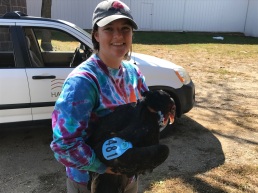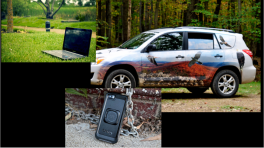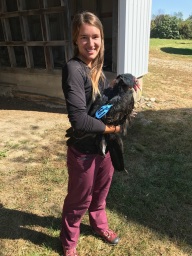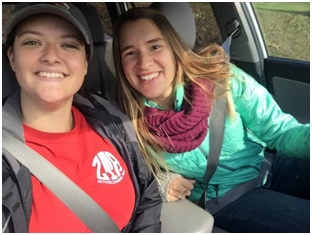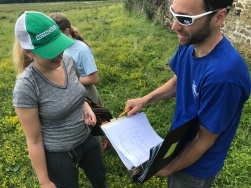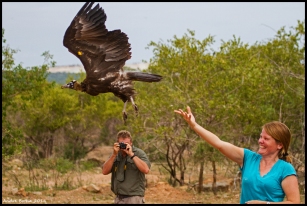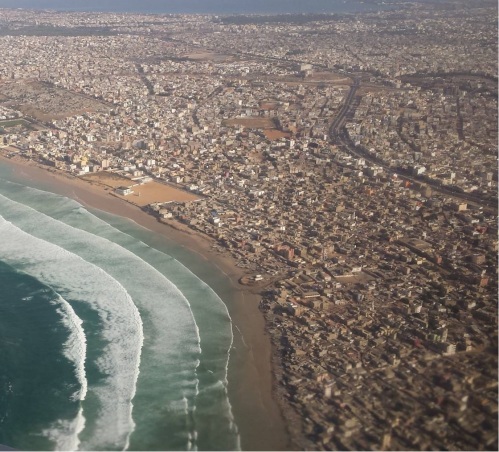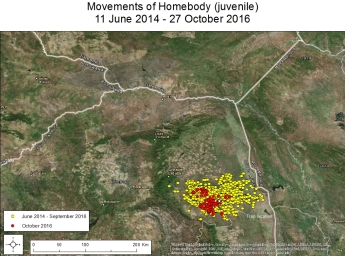20 March 2018
Keith L. Bildstein, Ph.D.
Hawk Mountain Sarkis Acopian Director of Conservation Science

The walk-in trap used to capture vultures at the Eliza Cove dump (Photo by Brandon Breen)
An e-mail from birding phenom Noah Strycker earlier this week reminded me just how interconnected our natural world of vultures really is. Noah’s recent “big-year” book Birding Without Borders has made him an international birding super-star, and that is what brought him to Hawk Mountain for a fall lecture last autumn. While at Hawk Mountain, Noah mentioned that he would leading a birding cruise in and around the Falkland Islands in March 2018, and I suggested that he be on the lookout for our color-banded striated caracaras there. (You may recall that we have banded more than 1200 of these enigmatic raptors over the past eight years on the Falklands, and I was certain Noah would spot one or more of them on his visit.) And indeed he did–R36 yellow, a juvenile we had banded on one island last summer, was seen by Noah almost 20 miles away on another island, a sighting that adds significantly to our knowledge of movement ecology in the species.
Noah, who was traveling on the M/V Ocean Adventurer, chartered by Quark Expeditions on a 33-day Atlantic Islands voyage from Ushuaia to Cape Verde, stopped for the day on March 13, and he and some others on the tour went to Gypsy Cove near Stanley to look for birds. They spotted two wing-tagged turkey vultures, a species we have studying and tagging in the Falklands since 2006. One was tagged with number 10 yellow, the other with 37 yellow, two individuals that had been tagged as adults on two successive days in early July 2010 at a municipal garbage tip near Stanley. That the two were still hanging around together more than seven years later is testimony to the longevity of the tags (take a look at them on the accompanying photos), as well as to the relationship of the two birds involved, both of which most likely roost with dozens of other turkey vultures on one of two small tussac islands near by.
Although we’ve had hundreds of reports of many of the 52 vultures we have tagged in the Falklands, Noah’s observations are the first in several years to report two birds simultaneously.

A wing-tagged vulture at a municipal garbage tip near Stanley in 2008 (Photo by Alan Henry)
Somewhat surprisingly, most of the tagged birds have remained near Stanley (and the dump) confirming that human rubbish plays an important role in the diets of these birds. I say “confirming” because a study of regurgitation pellets from turkey vultures collected by Amélie Augé of the South Atlantic Environmental Research Institute suggests a strong rubbish relationship. Amélie collected her pellets in and around Stanley in 2015 and published her work in the journal Polar Biology in 2016. Most of the regurgitation pellets she collected contained “anthropogenic debris,” including plastic, glass, paper, fabric, and/or aluminum in addition to more natural remains. The relatively low human density of the Falklands (fewer than 3,000 on an archipelago the size of Connecticut) emphasizes the extent to which even small numbers of people can influence and contaminate the diets of raptors even on relatively remote areas.
I look forward to re-connecting with yellow 10 and yellow 37, as well as other wing-tagged turkey vultures on my next visit to the Falklands in August. Assuming I do re-connect, I will let you know.






